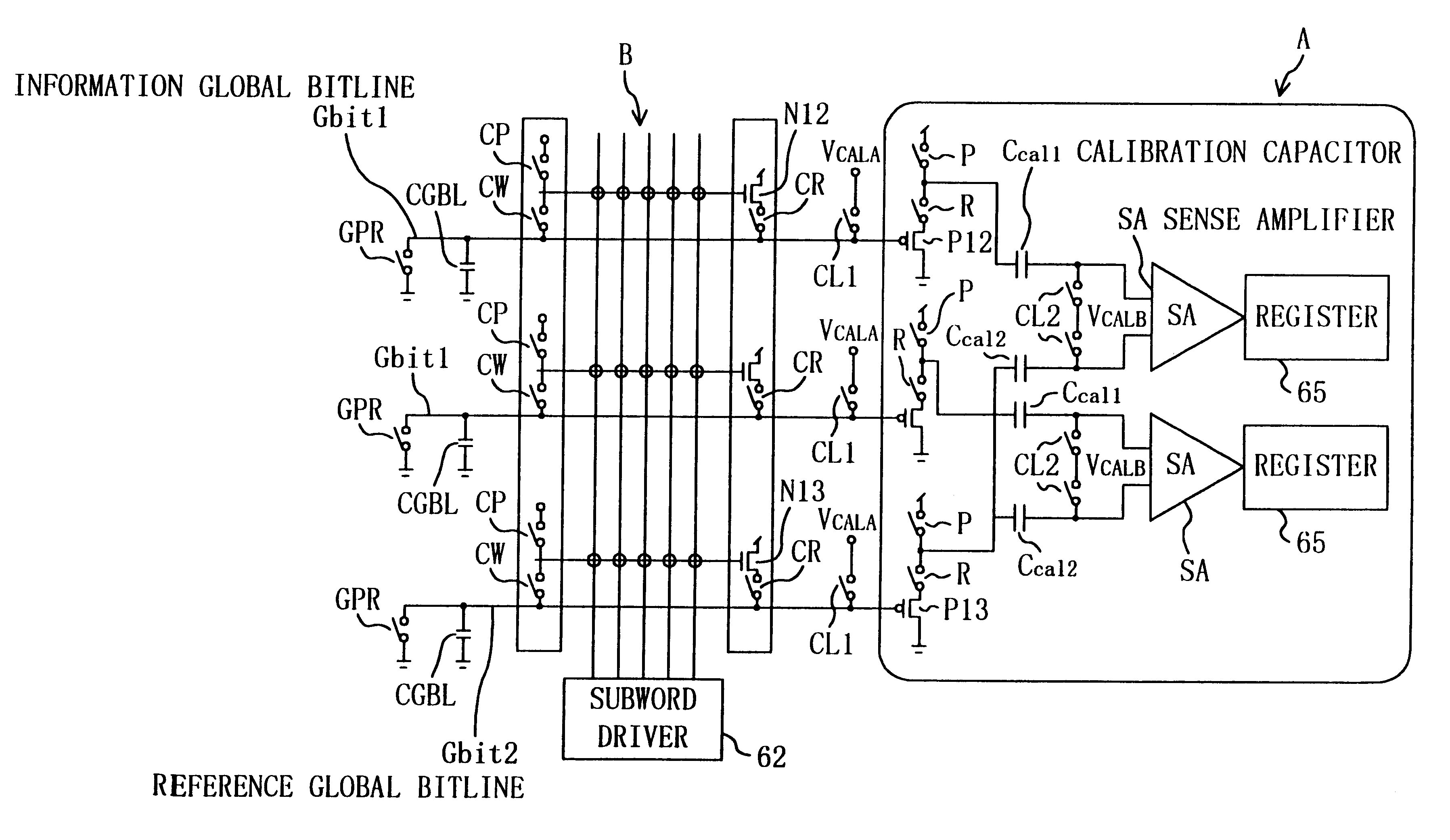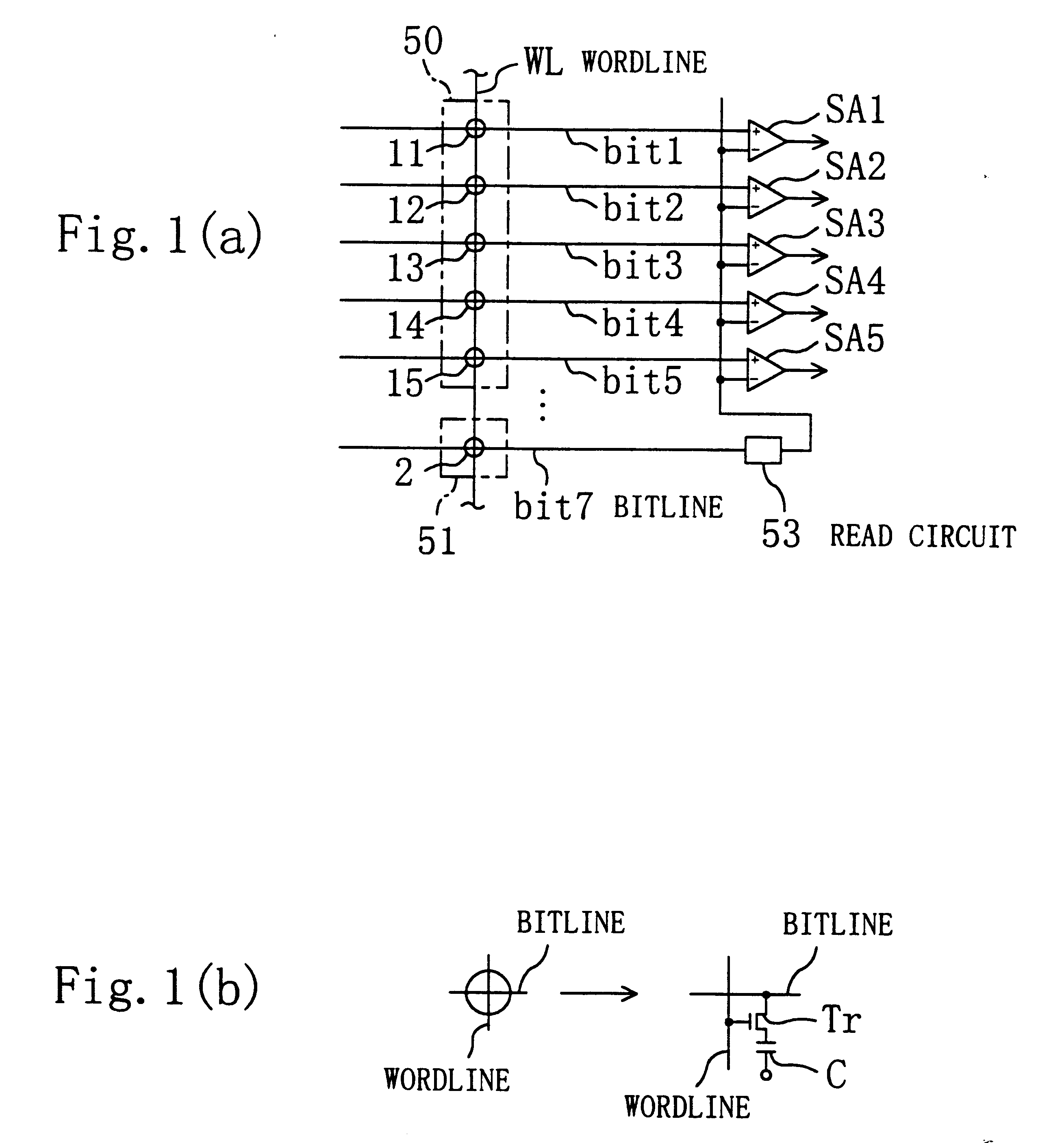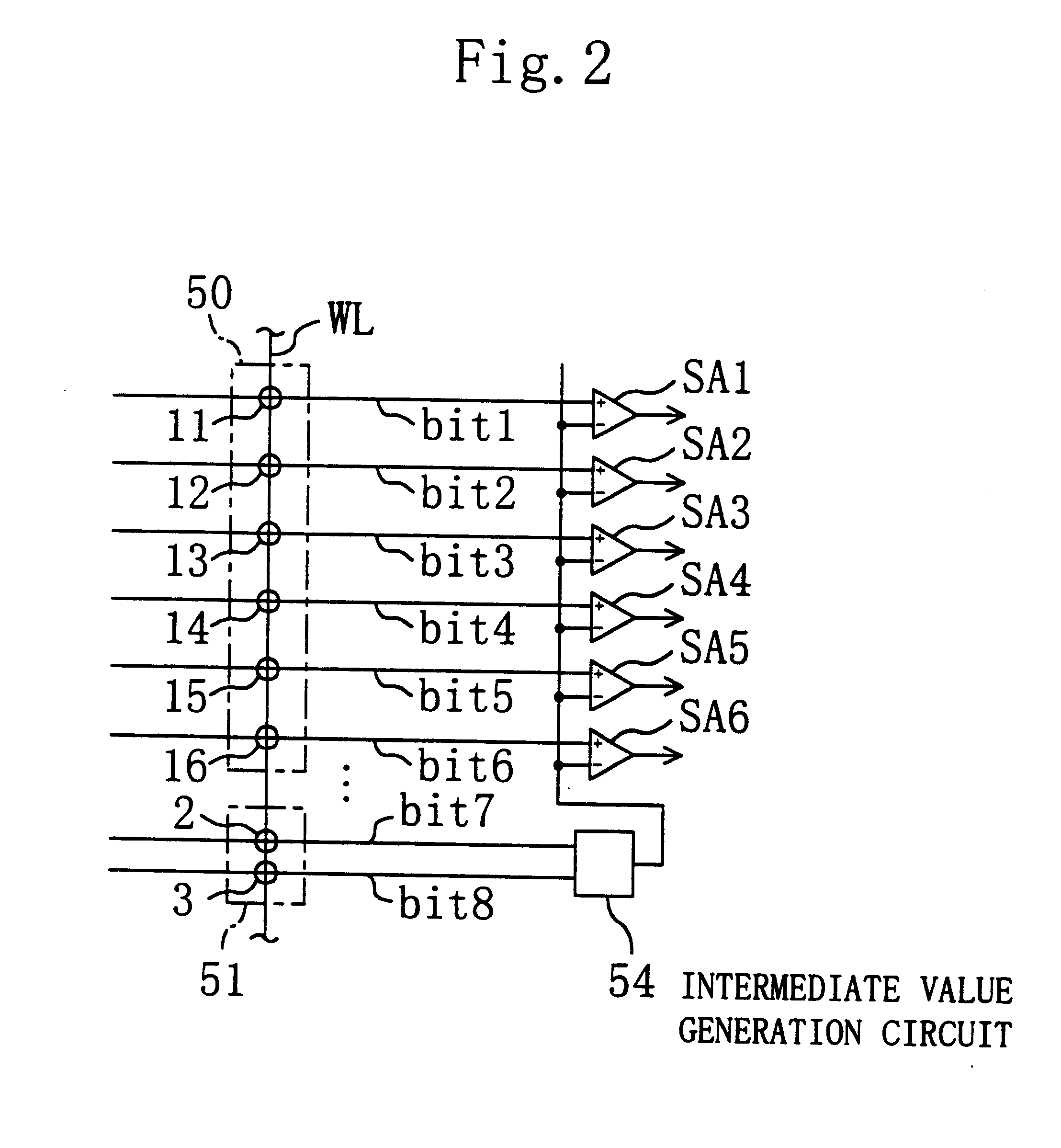Semiconductor memory
a technology of semiconductor devices and memory, applied in the field of semiconductor memory, can solve the problems of difficult process devices to meet such requirements, and achieve the effects of preventing poor yield, reducing the entire process cost, and prolonging the retention time of data
- Summary
- Abstract
- Description
- Claims
- Application Information
AI Technical Summary
Benefits of technology
Problems solved by technology
Method used
Image
Examples
first embodiment
Referring first to FIG. 1, this invention is described.
In FIG. 1(a), 11-15 are memory cells (information memory cells) for storing information. These memory cells 11-15 belong in a first memory cell group 50. 2 is a memory cell that belongs in a second memory cell group 51. WL is a word line to which the memory cells 11-15 of the first memory cell group 50 and the memory cell 2 of the second memory cell group 51 are coupled. Each of the memory cells 11-15 and 2, shown in symbolic form in FIG. 1(a), is made up of a cell transistor Tr and a cell capacitor C as shown in detail in FIG. 1(b). In FIG. 1(b), only one word line WL is shown; however, there exist a plurality of word lines WL and memory cells 11-15 and 2 are coupled to a word line WL.
The memory cells 11-15 of the first memory cell group 50 are coupled, through bit lines bit1 to bit5, to differential input terminals of corresponding sense amplifiers SA1-SA5. On the other hand, the memory cell 2 of the second memory cell group 5...
second embodiment
Referring now to FIGS. 4 and 5, a second embodiment of the present invention is described below.
FIG. 4 shows the second embodiment. FIG. 5 illustrates in detail elements of the second embodiment.
In the second embodiment, the first memory cell group 50 is (vertically in the figure) divided into two sections and the second memory cell group 51 is disposed between these two sections. This arrangement aims to carry out reference potential information transmission from the second memory cell group 51 which stores reference potential information to the first memory cell group 50 in the same time with good symmetry and to allow the first and second memory cell groups 50 and 51 to receive the same amount of noise for noise cancellation.
In the figure, in the second memory cell group 51 the number of reference memory cells coupled to the same word line is one. However, the FIG. 2 structure may be used. This, however, requires the provision of the intermediate value generation circuit 54.
In th...
third embodiment
Referring now to FIGS. 8 and 9, a third embodiment of the present invention is described. The third embodiment is an improvement of the second embodiment.
The object of the present embodiment is to avoid the phenomenon, which takes place In the second embodiment, that there occurs a reduction in input voltage applied to the sense amplifier SA due to the signal propagation characteristic between the local probes PRBa and PRBb and variations in the signal propagation characteristic between the preamplification sections 60 and 61. The input voltage of the sense amplifier SA varies by a sum of the difference between the threshold voltages (Vtn) of the control transistors N12 and N22 of the two local probes and the difference between the threshold voltages (Vtp) of the control transistors P14 and P24, resulting in a decrease in operation margin. The present embodiment avoids the variation by means of calibration capacitors.
A calibration procedure is described below.
Referring to FIG. 9, bo...
PUM
 Login to View More
Login to View More Abstract
Description
Claims
Application Information
 Login to View More
Login to View More - R&D
- Intellectual Property
- Life Sciences
- Materials
- Tech Scout
- Unparalleled Data Quality
- Higher Quality Content
- 60% Fewer Hallucinations
Browse by: Latest US Patents, China's latest patents, Technical Efficacy Thesaurus, Application Domain, Technology Topic, Popular Technical Reports.
© 2025 PatSnap. All rights reserved.Legal|Privacy policy|Modern Slavery Act Transparency Statement|Sitemap|About US| Contact US: help@patsnap.com



